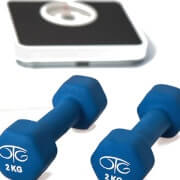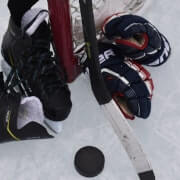-
September 2020
Youth Hockey Strength and Conditioning Programs to Follow!

Hockey is an excellent game that allows players to play on ice while balancing on sharp blades, and it can unite people from different cultures. But you may be wondering which strength and conditioning programs help make a pro hockey player.
To develop an effective strength and conditioning program, you should include warm-ups, stretches, plyometrics, balance and coordination, core conditioning, agility and quickness, off-ice stickhandling, and cool-downs. These programs play a huge role in the performance of any hockey player.
Do Ice Skates Come Sharpened?

Ice hockey is a great past time you can play all year round. You just need some good friends, an ice rink, hockey sticks, and a nice pair of sharp ice skates. Adequately sharpened ice skates are mandatory equipment when playing on any ice surface.
Unfortunately, only some new ice skates come sharpened from the factory. Most skates arrive dull and require sharpening before you try them. Even if you do buy them already sharpened, you still want to re-sharpen them as shipping can ding the blades.
How to Introduce Body Checking to Youth Hockey Players?

Hockey is a physical sport, and sooner than later, young players need to be introduced to the more physically demanding aspects of the game. Body checking is one of these aspects. Considered to be the fourth line of defence in hockey, most parents and coaches worry a lot about how to introduce body checking to young players properly.
Before body checking can be introduced, players must be well trained in the game’s fundamental aspects like skating, game awareness, and body positioning. After teaching the first three lines of defence (angling, stick checks, and body blocks), coaches can start drilling the players on body checking.
WSHL vs. NAHL: Which League Is Better?

The North American Hockey League (NAHL) and the Western States Hockey League (WSHL) are the two most popular Tier II Junior hockey leagues in the US. The NAHL is older and more prominent than the WSHL but is it really the better Junior Hockey league between the two?
NAHL is by far the larger (with 26 teams competing, compared to the WSHL’s nine teams) and the more experienced Junior hockey league. But WSHL has made some impressive advances in recent years, bringing it on par with the NAHL. Given that, both the NAHL and the WSHL have their own strong points.
Is 13 Too Old To Start Hockey? We Don’t Think So

The speed, the ice, the action: it’s no wonder why over 1 million people around the world play organized hockey and millions more cheer them on. This fast-paced sport is known for the dedication and enthusiasm it produces in both players and fans, and most devotees start their journey on the ice as children. But, can children who get a later start expect to be successful in the competitive world of organized hockey?
Thirteen-year-olds are not too young to start hockey, although most parents choose to get their kids on the ice before their 13th birthday. Most players and coaches share the view that it’s never too late to start playing hockey, although late-comers will have to work hard to catch up.
What Is the Highest Level of Junior Hockey?

Hockey has a long history in the US and Canada, and if you’re considering joining the sport that has received international recognition for so long, the American Junior Ice Hockey could be your best pick. However, before you get your hopes high, there are steps you should know about. We know them as the levels that help you climb the ladder and reach your NCAA goals, but what is the highest level?
The highest level of junior hockey is Tier I under the United States Hockey League (USHL). It’s currently at the top of the tier system, just above the North American Hockey League (NAHL) and Tier III. For years, USHL has been attracting talent from all over the country and the rest of the world.
What Is the Average Cost of Youth Hockey Equipment?

Youth hockey is a fun sport for children to play. But the costs of all the equipment is never fun for the parents.
The average cost of youth hockey equipment for a new player can range from $280-$1,000. But aside from equipment fees, you will also have to pay for team fees. This can vary by location and can cost anywhere from $400 or higher.
7 Great Half Ice Hockey Drills for Forwards You Must Try Out!

To have a successful hockey team, you must have good team members. This will typically start with running drills repeatedly and training your forwards to become the best they can be and help them learn to work well with their teammates.
Seven great half-ice hockey drills for forwards include the Three vs Zero Drive, Three vs Zero Curl, Three vs Zero Trailer, Three vs Zero Dump In, Backside Pass Drill, Cross with a Drop Pass, and Shot and Walkout. These can be made more complicated with defence, and a goalie added to the mix.
The Best Junior Ice Hockey Elbow Pads Revealed!

Elbow pads are an essential part of every hockey player’s uniform for a variety of reasons. Elbow pads are designed to protect the elbow, biceps, and forearm from injury during play. Without a great pair of elbow pads, a fall or a hit can cause severe damage and potentially ruin your career as a hockey player, whether you’re amateur or pro.
We have found that the Bauer Supreme TotalOne MX3 Youth Elbow Pads are the best in the business for young hockey players. They are durable, moisture-wicking, and extremely comfortable, unlike many others on the market. They are also reasonably priced, making them an excellent value for your athlete.
How Do You Know If Your Ice Skates Need Sharpening? Here’s How!

Skating with blunt blades can not only impact your performance but also result in severe consequences. Therefore, you need to understand how to tell if your ice skates need sharpening. Once you know these tell-tale signs, you will be able to keep your ice skates sharpened and enjoy a better skating experience.
If you have spent more than 15 to 20 hours on the ice, you need to sharpen your ice skates. Moreover, if you constantly keep falling, your ice skates need sharpening to form a better grip with the ice. If you are experiencing any difficulty making turns on the ice, your ice skates need to be sharpened. Lastly, you can do the thumb check to determine whether or not you need to sharpen your skates.